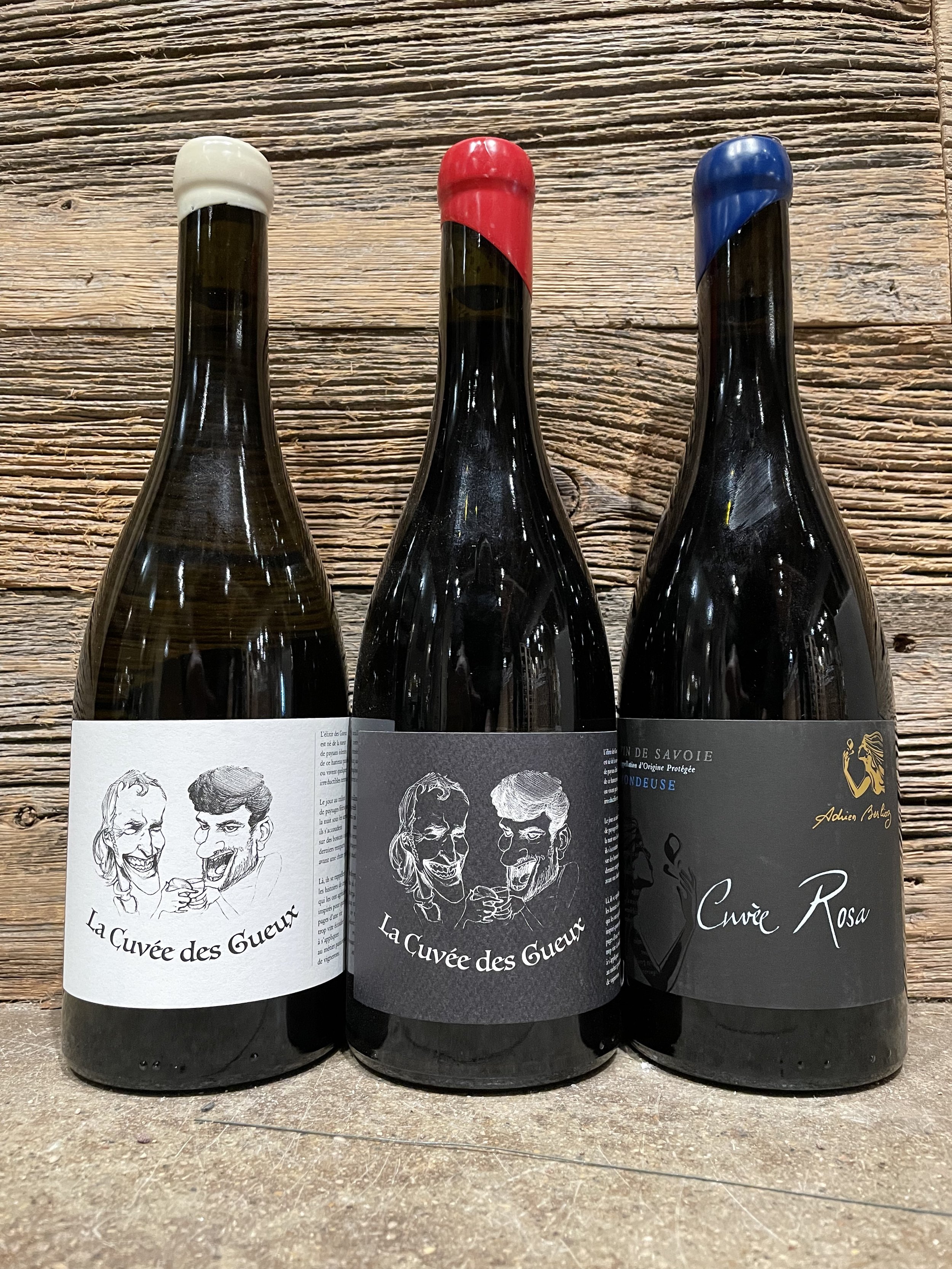Adrien Berlioz
Savoie, France
The Berlioz name is well known in Savoie, with Adrien's cousin Gilles one of the most famous producers in the region, known since the 1990s for converting to biodynamics and drastically lowering his yields. Adrien's winery has only been around since 2006. He started out in his mid-twenties after studying viticulture and oenology at Beaune. He started very small, with less than a hectare, but has grown his Domaine to a little over five hectares today, all mostly around Chignin plus a couple of other villages on the Combe de Savoie, and all farmed Biodynamically (with both Demeter and Ecocert certification).
The majority of his parcels are located in Chignin, at the base of the limestone escarpments of the Bauges massif, in a beautiful part of the region close to both Albertville and Chambery. He has divided his vineyards into thirteen different parcels, all of which are vinified separately and farmed with different techniques. Typical for the region his vineyards are extremely steep, resting on deep clay-limestone soils. Adrien works without any herbicides or inorganic fertilizers, plowing by horse or by hand to avoid compressing the soil. Tractor work is not possible in many of his vineyards due to their steepness.
He farms the traditional Savoie grape varieties: Mondeuse, Jacquère, Altesse, Roussanne and the almost extinct red Persan, which has less than 7 hectares planted globally. Though each parcel is vinified separately, they are sometimes blended together in the cellar. These decisions are made based on the taste of each wine throughout its elevage.
The Domaine has been certified organic since 2012 and all of the parcels are cultivated using the most natural means possible, with no herbicides, chemical fertilisers or other synthetic products in either the vineyards or the cellars.
Whites are whole cluster pressed and often see extensive bâttonage. Reds are vinified in whole clusters. All the wines are naturally fermented, low in sulphur and unfiltered. Vinification is done in a combination of stainless steel and demi-muids (large barrels).
The region: The eastern French alpine region of Savoie remains somewhat obscure due to its highly mountainous area with little land for viticulture, and the ski tourists who come year-round to drink up all its wine. For much of its history Savoie was an independent Duchy but in 1860 Savoie and Nice became part of France, and the Dukes of Savoie then became the Kings of Italy. It is a shorter drive to Piedmont than to the Rhone valley from most of the region. It includes the eastern part of the Rhône-Alpes department in France, and borders both Switzerland and Valle d'Aosta in Italy. The region was recognized as an AOC in 1973, one of the last in France of its major wine regions.
The vineyards themselves can be split into three main areas: those in the North-East by Lake Geneva, those in the North-West near the Rhône, and those in the South, in the Combe de Savoie and the Cluse de Chambéry. All of the vines in Savoie are planted between 200 - 500 metres. Snow is not a major problem in the vineyards as it rarely settles for long below 500m. These same steep slopes also help protect the vines from strong winds and increase their exposure to the sun. The winters are of course cold, but summers can be very hot though the climate is still considered continental, with heavy rainfall. Because most of the vines are on slopes, they drain the water, though the humidity results in intense fungal pressure making organic farming very difficult.
Chignin Cuvée des Gueux Blanc
Jacquère with a small addition of Altesse from a single parcel called Les Châteaux which rests on silty clay limestone. Vines are 80+ years old and can only be worked by horse and planted at 8000 vines per hectare.
Cuvée des Gueux Rouge
50% Mondeuse and 50% Persan from two different parcels: Conservatoire and Montmélian which both rest on chalk and gravel over limestone. Vines are a mix of young and old planted at 8000 vines per hectare.
Mondeuse "Rosa"
Mondeuse from a parcel of young vines called La Ravinée which rests on silty clay-limestone soils planted at 8000 vines per hectare.
Retail
Ellement Wines & Spirits

